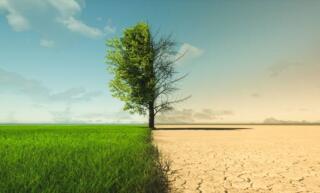
5 Reasons Why Droughts May Occur in Your Region
When droughts occur, they have severe impacts on ecosystems, agriculture, and even aspects of daily life. However, you may have wondered, “What causes them to happen in the first place?” This article can help answer that question as we look at five reasons why droughts may occur in your region.
Lack of Precipitation
When your area experiences a lack of precipitation, your lawn may experience the effects of this dry spell. In fact, there are several ways that droughts can affect your trees. When a region experiences below-average rainfall for an extended period, water reserves such as rivers, lakes, and aquifers dry up.
This scarcity of water disrupts agricultural activities and strains drinking water supplies. Therefore, it is essential to monitor and forecast weather conditions to mitigate the risks of drought.
Deforestation
Another reason why droughts may occur in your region is deforestation. Trees and vegetation help maintain the water cycle by absorbing rainfall and releasing moisture into the atmosphere.
However, when people clear large areas of forests, they disrupt this cycle, leading to reduced humidity and precipitation. Preserving forests and replanting trees are vital strategies for maintaining regional water balance.
Warmer Land Temperatures
Rising land temperatures can also contribute to drought conditions by increasing the evaporation rate from soil and water bodies. This accelerated evaporation depletes moisture in the dirt, hurting plants’ ability to grow and making it difficult for water sources to replenish. Heatwaves can amplify these effects, leading to more severe and prolonged droughts.
Ocean Temperatures
Ocean temperatures can also profoundly affect regional weather patterns and contribute to drought. However, on the positive side, warm ocean waters can lead to increased evaporation and influence weather systems in ways that increase rainfall. Monitoring oceanic conditions and understanding their impacts can improve drought prediction and preparedness.
Jet Stream Changes
Changes in the jet stream—the fast-flowing air currents in the atmosphere—can influence weather patterns and contribute to droughts. When the jet stream has dry air from certain areas, it can cause prolonged dry periods. This makes the jet stream a critical element to study for understanding and predicting droughts.
These examples show that droughts result from a complex interplay of environmental factors. By learning about them, people can learn how to cope with droughts.






